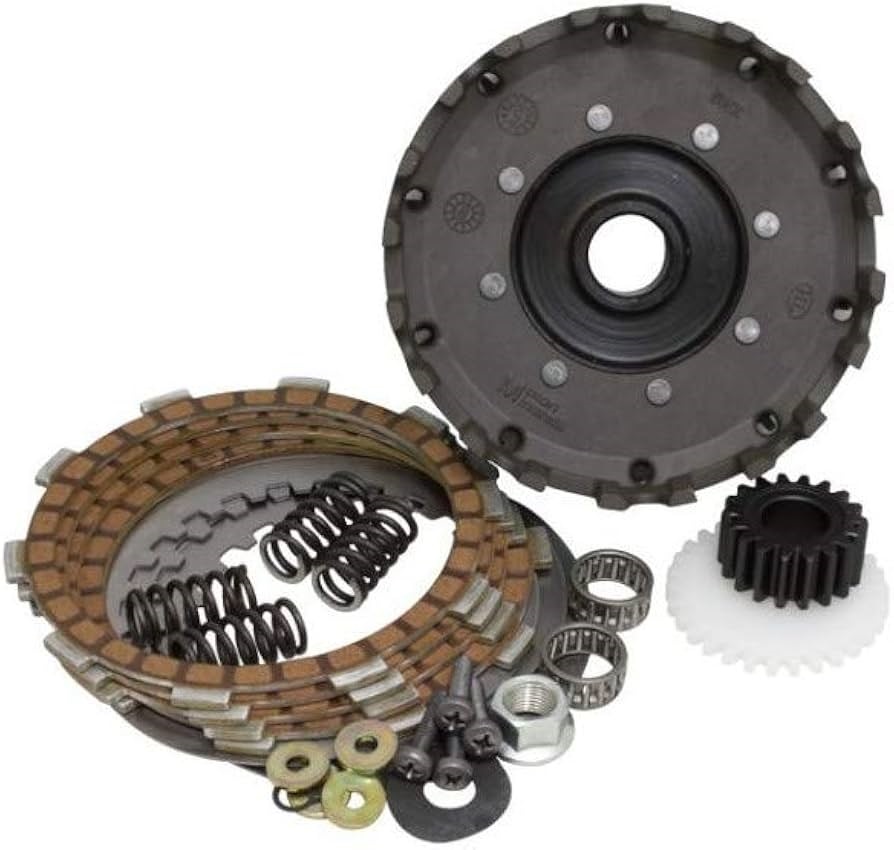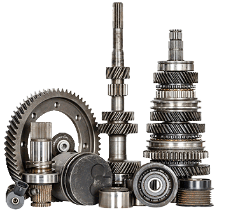What is a Clutch? Working Principles, Types, and Maintenance Tip

What is a Clutch, How Does It Work, and What Are Its Types?
The clutch is a critical component in vehicles with manual transmissions, responsible for connecting and disconnecting the engine's power to the drivetrain. This mechanism enables smooth gear shifts, ensures efficient power transfer, and allows the vehicle to start and stop without stalling. In this blog post, we'll explore the workings of a clutch, its types, differences, advantages, disadvantages, and essential maintenance tips to keep it functioning optimally.
How Does a Clutch Work?
The clutch operates on the principle of friction. It consists of several key components, including the clutch disc, pressure plate, flywheel, and release bearing. Here's a simplified explanation of its operation:
- Engagement: When the clutch pedal is released, the pressure plate presses the clutch disc against the flywheel. This creates friction, transmitting the engine's power to the transmission and ultimately to the wheels.
- Disengagement: Pressing the clutch pedal moves the release bearing, which separates the clutch disc from the flywheel. This interrupts power transmission, allowing gear changes or halting the vehicle without stalling the engine.
Types of Clutches
There are various types of clutches, each suited to different applications and vehicle requirements.
1. Single-Plate Clutch
This is the most common type, used in passenger vehicles. It consists of a single friction disc sandwiched between the flywheel and the pressure plate.
2. Multi-Plate Clutch
Used in high-performance vehicles and motorcycles, this type features multiple friction discs, offering a higher torque capacity in a compact design.
3. Dry Clutch vs. Wet Clutch
- Dry Clutch: Operates without lubrication and is more responsive but prone to wear.
- Wet Clutch: Immersed in oil, providing better cooling and longevity, ideal for heavy-duty applications.
4. Centrifugal Clutch
Commonly used in scooters and light machinery, it engages automatically based on engine speed, eliminating the need for a clutch pedal.
5. Dual Clutch
Found in modern automated manual transmissions, this system uses two clutches for seamless gear shifts, enhancing performance and fuel efficiency.
Advantages and Disadvantages of Clutch Types
Advantages
- Manual Clutches: Provide greater control and precision, especially in performance driving.
- Dual Clutches: Deliver smoother shifts and improved fuel economy.
- Wet Clutches: Offer durability and heat resistance in demanding conditions.
Disadvantages
- Dry Clutches: Wear out faster due to friction and heat.
- Multi-Plate Clutches: Can be more expensive and complex to repair.
- Centrifugal Clutches: Limited to low-power applications.
Maintenance and Fault Prevention
Proper maintenance is essential to ensure the longevity and performance of your vehicle's clutch system. Here are some key tips:
1. Check the Clutch Disc Regularly
Inspect the clutch disc for wear and replace it when necessary. Excessive wear can lead to slippage and reduced efficiency.
2. Monitor Hydraulic Fluids
In hydraulic clutch systems, ensure that the fluid levels are maintained and free from contamination. Replace the fluid as recommended by the manufacturer.
3. Clean and Inspect the Flywheel
Ensure the flywheel surface is smooth and clean to prevent uneven wear on the clutch disc.
4. Avoid Overloading the Clutch
Do not rest your foot on the clutch pedal while driving, and avoid holding the vehicle stationary on a hill using the clutch. These habits can cause premature wear.
Common Clutch Problems and Solutions
1. Clutch Slipping
Symptoms: The engine revs increase, but the vehicle doesn’t accelerate proportionally.
Cause: Worn clutch disc or contaminated surfaces.
Solution: Replace the clutch disc and clean the flywheel.
2. Clutch Shudder
Symptoms: The vehicle vibrates when the clutch is engaged.
Cause: Warped flywheel or contaminants on the disc.
Solution: Resurface the flywheel and clean or replace the disc.
3. Stiff Pedal
Symptoms: The clutch pedal requires excessive force to operate.
Cause: Hydraulic fluid issues or mechanical blockages.
Solution: Check fluid levels and inspect the mechanical components.
Innovations in Clutch Technology
Recent advancements in clutch systems aim to enhance efficiency, performance, and comfort. These include:
- Self-Adjusting Clutches (SAC): Automatically adjust for wear, reducing maintenance requirements.
- Carbon-Fiber Clutches: Provide superior durability and heat resistance for high-performance applications.
- Automated Manual Transmissions (AMT): Combine the benefits of manual transmissions with automatic operation for a smoother driving experience.
Conclusion
The clutch is a crucial component for efficient and smooth vehicle operation. Understanding its working principles, types, advantages, disadvantages, and maintenance needs can significantly enhance your driving experience and prolong the lifespan of your vehicle. Regular inspection and timely maintenance are vital to keep your clutch system in optimal condition.
At Automev.com, we offer a wide range of high-quality automotive spare parts, including clutch components for various vehicle types. Whether you’re a professional mechanic or a DIY enthusiast, our extensive product catalog and expert support are here to help you maintain your vehicle's performance. Visit us today and discover how we can support your automotive needs!

 TR
TR EN
EN

